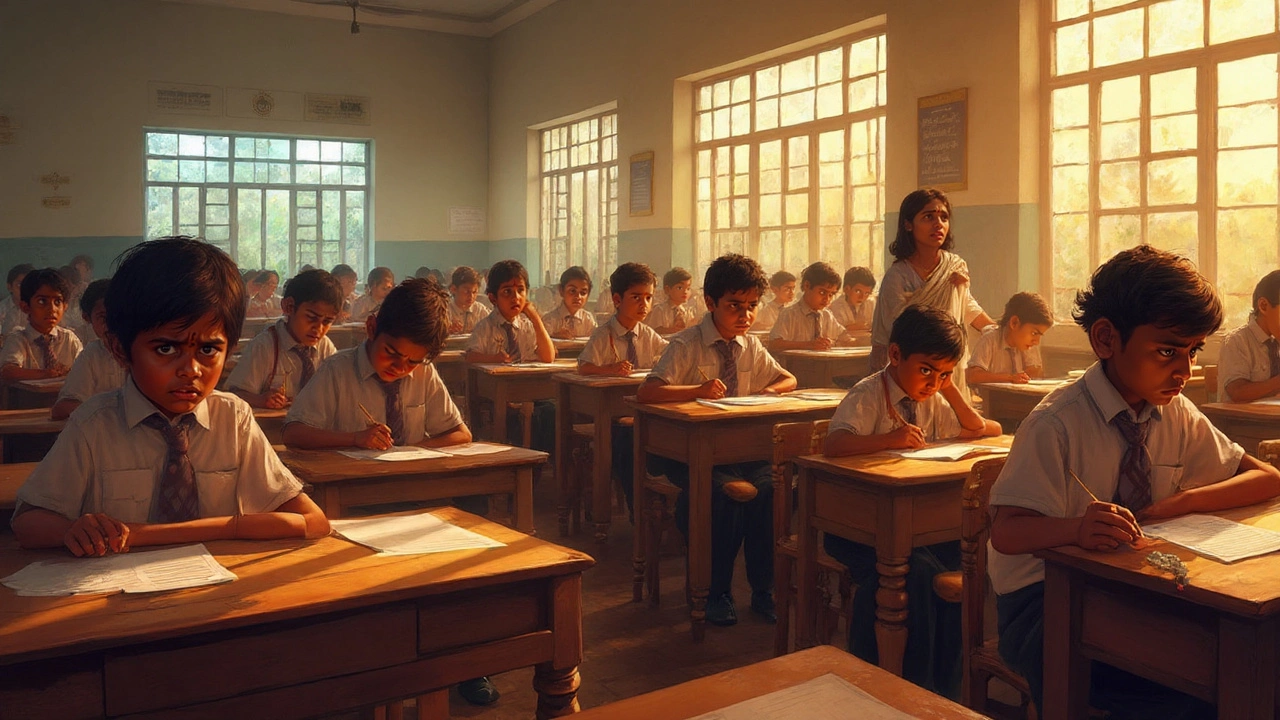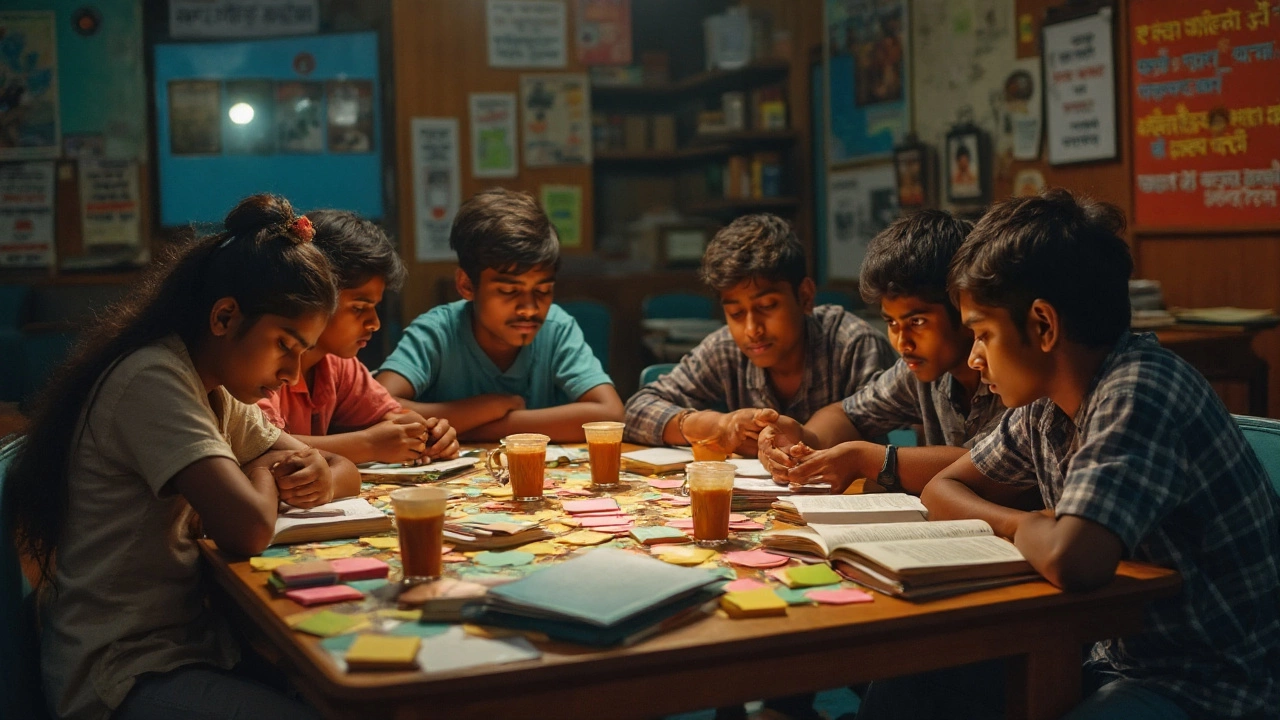Who gets to decide which board exam deserves the dreaded title of the hardest in the world? No matter where you are—India, the US, or South Korea—it feels like every country claims their toughest exam is the stuff of nightmares. But some exams have earned global infamy, breaking students and keeping entire families awake at night with their stakes. This isn’t the kind of challenge you can swipe away with a motivational meme or late-night cramming. The hardest board exams in the world set the bar not just for academic achievement, but for human endurance, and they reveal just how much pressure education systems can put on young minds. Let’s dig into what makes these exams so legendary, why they’re so tough, and what strategies candidates use to survive the ordeal.
What Makes a Board Exam Truly 'the Hardest'?
Not every test can claim the top spot when it comes to difficulty. So, what separates your average tough test from an exam that terrifies entire generations? The sheer volume of material? The mind-bending questions? The cutthroat competition for life-changing rewards? Usually, it’s all of the above, multiplied by a culture where failure isn’t just about starting over—it might mean missing out on the dream job or a future altogether. For example, India’s IIT JEE Advanced exam is notorious not just for its complexity, but for allowing less than 2% of test-takers to succeed. Compare that to SAT acceptance rates or even most US bar exams, and the numbers alone are enough to make you sweat. South Korea’s CSAT (Suneung) literally brings the nation to a halt—flights get grounded and cities go silent so kids can concentrate.
But there’s more to it than just numbers. Some board exams are built to weed out all but the most prepared. The CFA (Chartered Financial Analyst) exam hands out pass rates that hover around 40% for Level 1, with even fewer clearing all three levels on the first attempt. China’s Gaokao is week-long and covers everything from chemistry to politics—the pressure is so immense that students routinely spend 12-16 hours a day preparing, and some high schools set up "cram camps" that last for years.
Let’s not ignore the mental challenge. The French Baccalauréat, for instance, demands both immense depth and breadth across science, philosophy, literature, and languages. It’s less about memorizing than debating, cross-linking, and applying logic, all under strict time limits. And while the US SAT or the UK’s A-Levels get plenty of global attention, neither is built with the same "elimination" focus as those that leave only a handful standing after a hundred thousand start.
You’ll notice most of the world’s toughest board exams share a few things:
- Giant pools of competitors
- Most questions require analytical, not just rote, skills
- Massive life consequences tied to results—university entry, scholarships, government jobs
- Incredibly low pass rates or limited available seats
- National-level attention—these aren’t just tests, they’re media events
So if you hear someone say their board exam was “pretty hard,” the candidates for these ultimate tests might just smile quietly. Their definition of hard is something else entirely.

The Most Infamous Hardest Board Exams (and Why They’re So Brutal)
Names like Gaokao, IIT JEE Advanced, and the USMLE (United States Medical Licensing Exam) aren’t tossed around lightly among students. They’re whispered with a sense of dread, the way athletes talk about marathon qualifiers. But what makes each unique, and why do they consistently top every list of “hardest board exams in the world”?
Gaokao (China): If you want to see raw pressure, Gaokao is the gold standard. Each June, nearly 12 million Chinese students sit for two days—or sometimes even four—of relentless testing that will decide the next stage of their lives. Fail, and you may have to repeat your senior year or settle for an obscure college. Pass with distinction, and China’s top universities open their doors. Over 80% of the country’s students take the test, and competition is so severe, some families relocate years in advance just to get into better schools. It’s not just one test: it’s a series of standardized assessments covering math, literature, English, and more. The Gaokao is known for questions that demand creativity—like math word problems so infamous they spark national debates.
IIT JEE (India): This engineering entrance exam attracts close to a million students a year, all competing for fewer than 17,000 seats in the Indian Institutes of Technology. The questions? Brutal. The topics? Advanced mathematics, physics, and chemistry pulled straight from the far end of the syllabus. In 2024, the acceptance rate dipped below 1.8%. Coaching centers are a billion-dollar industry, and prepping for this test can start years before students even reach 11th grade. Fail once, and you get at most two cracks—pressure doesn’t get more intense than this.
CSAT/Suneung (South Korea): Imagine your country declaring exam day a mini-holiday. Planes are grounded, stock markets open late, emergency services are on high alert—the Suneung is that serious. Students spend up to 16 hours a day preparing, and stories of all-night study rooms are legendary. The exam itself checks not just knowledge, but one’s ability to handle sleep deprivation and stress. A high score brings admission to Korea’s SKY universities, and with it, the promise of a lifetime of status and job opportunities.
United States Medical Licensing Exam (USMLE): While not a pre-university board, the USMLE is a towering gatekeeper for anyone looking to practice medicine in the US. Three steps, endless reading, clinical knowledge checks, and the stakes? Doctor, or not. The Step 1 exam, lasting eight hours, covers thousands of pages of material. Only the sharpest—and the most resilient—make it through.
CA/CPA (Chartered Accountant/Certified Public Accountant, India and US): Both titles are globally respected because they’re ridiculously hard to earn. In India, the CA exam system includes three levels, with pass rates often hovering in the single digits. The US CPA exam isn’t much easier; it features four separate exams and covers an ocean of tax law, auditing, business, and more.
CFA (Chartered Financial Analyst): For finance pros, nothing beats the CFA. The three-level exam series tackles ethics, economics, accounting, and portfolio management. Candidates can spend over 300 hours prepping for one level, with a cumulative pass rate of only around 20% for those who start Level 1 and reach Level 3 without failing.
The chart below puts some real numbers on just how hard these exams are:
| Exam | 2024 Pass Rate | Number of Test-takers |
|---|---|---|
| Gaokao (China) | ~25% for top universities | 12,000,000+ |
| IIT JEE Advanced (India) | ~1.8% | 180,000 (second phase) |
| USMLE Step 1 (US) | ~90% (mainly med students); international: ~60% | 30,000+ |
| CA Final (India) | ~12% | 150,000+ |
| CFA Level I | ~41% | 150,000+ |
| CSAT/Suneung (South Korea) | Variable; <20% to SKY universities | 500,000+ |
Notice how a low pass rate often pairs up with a huge number of competitors. That combo makes these exams extra fierce. Plus, these tests aren’t just about getting through a syllabus—it’s about outsmarting the toughest questions you’ll ever see.
To sum it up, whether we’re talking about China’s Gaokao or India’s JEE, these aren’t just academic hurdles—they’re societal milestones. Success means more than good grades; it’s status, opportunity, and sometimes, the only route to a future outside your hometown.

Surviving the Hardest: Tips, Myths, and Mental Games
If you’re aiming for one of these legendary board exams, you’re not just fighting with books—you’re wrestling your own nerves, your family’s expectations, and society’s judgment. How do students avoid burning out before the big day? What works and what’s just urban legend?
Start with scheduling your studies like your life depends on it—because for many, it honestly does. Most top scorers rely on timetables measured not in weeks, but in hours. For example, JEE Advanced toppers often talk about building six-hour study blocks, splitting topics, and using flashcards for high-impact formulas. Gaokao students are famous for “question banks”—giant folders with ten years’ worth of previous papers.
Eat, sleep, repeat—those three things are almost as important as getting the answers right. Sleep deprivation might be wear-it-like-a-badge-of-honor stuff in some circles, but loads of evidence says cramming at 3 a.m. hurts more than it helps. Top performers in the USMLE or Chartered Accountancy exams highlight the importance of sleep cycles, short naps, and planned breaks.
No one crushes these exams solo. Every country where the hardest exams exist has entire industries built around making them less impossible. South Korea’s hagwons (private tutoring schools), India’s coaching factories in Kota, or China’s specialized cram schools all thrive on one thing—students desperate to find an edge. Group study, online communities, doubt-clearing sessions: if there’s a tactic, it’s probably been tried.
But some myths die hard. The idea that only "geniuses" pass is nonsense. Most real-world toppers will admit they’re not Einsteins—they’re just persistent, highly organized, and willing to grind while others are scrolling social feeds. Memorization has its limits: for exams like the CFA or Suneung, the focus is on solving new problems fast, not reciting lists of facts.
- Master mock tests. If a practice paper feels easy, find a harder one. Use mistakes as a roadmap for where to focus next.
- Build a support network—friends, parents, teachers, even online strangers going through the same experience.
- Treat setbacks as fuel, not failures. Everyone has bad days; what separates winners is getting back up.
- Practice mindfulness. Even ten-minute meditations can tame stress, sharpen memory, and keep your focus where it belongs.
One thing you can’t underestimate: adaptability. Exam patterns, especially for the hardest board exams, might change at the last moment. Students who prep for surprises—like sudden essay questions or revised topics—do better than those who expect everything to go by the book.
All this sounds exhausting, right? It is. But sometimes the mammoth challenge becomes its own reward: if you can face the hardest test in your country, the rest of life starts to look a lot more manageable. And maybe that’s why, despite the stress, sweat, and tears, every year new students step up for the challenge—hoping to join the small club who’ve beaten the world’s toughest board exams at their own game.
